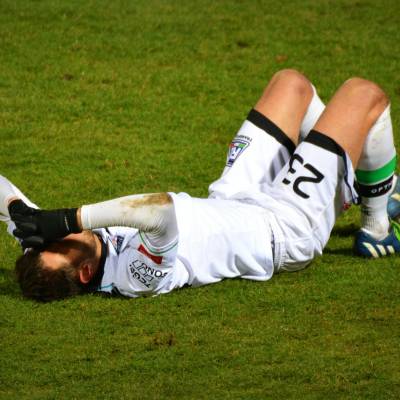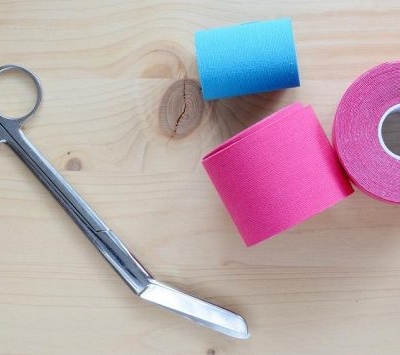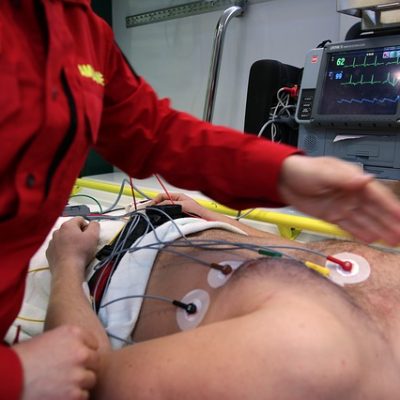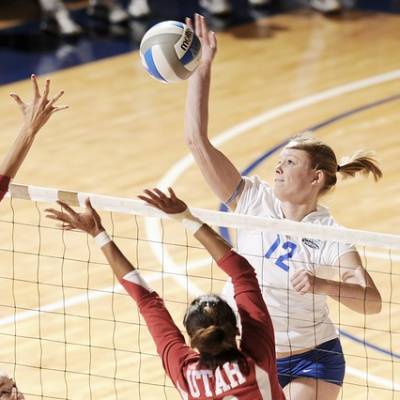Post-traumatic physiotherapy
Don’t expect long order times. Timely physiotherapy after an injury is crucial for restoring proper tissue function.
What happens in the body after an injury?
After the injury, changes begin to take place in the body or the affected part of the body, which are aimed at protecting or fixing the place and the tissue begins to manage. Tissues heal with inflammation. Immune cells go to the site of damage and work on its healing. But with this, swelling will also begin to form. This will immobilize the site. Because there is much more going on in the tissues than usual, a lot of waste substances are also produced, but they do not all manage to be washed away by the lymphatic system and so they accumulate in the tissue. Swelling and pressure increase in the tissue, which in turn makes it difficult to circulate and heal well. So we are in a vicious circle. If the one is not broken by a good intervention, the swelling begins to thicken, stiffen, the representation of ligaments in it increases and the swelling becomes chronic. This further limits both healing and the good functioning of the damaged area. The swelling presses on receptors in the tissue, and they report to the brain that the area is not in order, that it needs to be knocked out of function for a while. So the brain stops sending impulses to the site/limb and thus the muscles begin to atrophy. However, we need to use the limb anyway, but with the difference that it is now poorly muscle secured, so there is further wear. And we have another vicious circle.


So how can physiotherapy help after an injury?
Acute phase:
At the first stage, it will mainly help to improve the conditions for tissue healing and prevent tissue atrophy. At this stage, it is necessary to work very gently and rather around the damage. The skin and subcutaneous tissue are loosened, the acres – the end part of the limb – are released and mobilized (e.g. after the ankle sprain, the instep and fingers are used). The limb is reflexively activated, thereby promoting blood circulation, accelerating lymphatic and vascular drainage, stimulating movement receptors, activating muscles. If the skin is not damaged, it is possible to apply kinesiotejping, which is still working on the site after therapy – it improves lymphatic drainage and mobility.
As a rule, after such therapy, swelling is significantly reduced, the affected area is looser and less painful. Healing and the possibility of using the affected limb will improve significantly.
Chronic stage:
At this stage, we are mainly concerned with preventing secondary changes – the formation of stiff swelling and atrophy. At this stage, the affected limb is swollen, marbled or colored purple. This swelling tends to be rather cold, after the load it becomes warmer. The muscles are visibly weakened and have less volume compared to the other side.Since the information that the place is not in order comes from the place, the brain has already eliminated it from its scheme. A person begins to unconsciously lighten the limb and save. But this in turn aggravates the atrophy. The unfavorable thing is that a muscle imbalance begins to develop, in the sense that certain muscles take over all the work and others stop working altogether. This leads to the fact that the joints are not in a good position and begin to be overloaded. Thus, there will be another reason for swelling, but already completely different than it was at the beginning.
At this stage, it is therefore necessary to work in great detail and precisely set up quality coordination. We need to work with the stimulation of the receptors of the site and in special positions activate those muscles that have fallen out of function. With such exercises, swelling is gradually mobilized.
It is definitely not possible to practice only simple exercises such as bend-stretch or lift and lay. These exercises involve only those muscles that are in the ascendancy, not those that have fallen out of function.
Here the method of Dynamic Neuromuscular Stabilization is of great importance prof. Kolar, thanks to which it is possible to stimulate and engage muscles that are otherwise activated very reluctantly.Furthermore, manual medicine techniques for the release of soft tissues and joints and the fascial manipulation method, which is very beneficial for secondary post-traumatic changes, are very beneficial. In the subacute and chronic phase, a very well-performed manual lymphatic drainage will help to treat swelling.
Trauma removal – chronic and acute pain
Suitable for adults and children who have gone through or are going through a difficult life situation and need to manage pain and return to normal life.
Therapy performed by Mgr. Michaela Zahrádka Kohlerová
For whom the method is suitable:
- conditions after COVID
conditions after undergoing any other more serious illness with persistent difficulties associated with the musculoskeletal, neurological, vascular and lymphatic systems
conditions after trauma, polytrauma, craniotrauma (head injury) - conditions after severe operations, conditions in chronic illnesses, which are medically compensated, but persistent pain
Learn more about trauma as a source of musculoskeletal problems here.


You can read more about post-traumatic physiotherapy here:
How our musculoskeletal system works and what influences it – surgeries, injuries, one-sided load
How does the body cope with injuries?
Running injuries – understand their cause and start from the brain
Ankle sprains: do not underestimate them so that the sprained ankle does not become unstable
